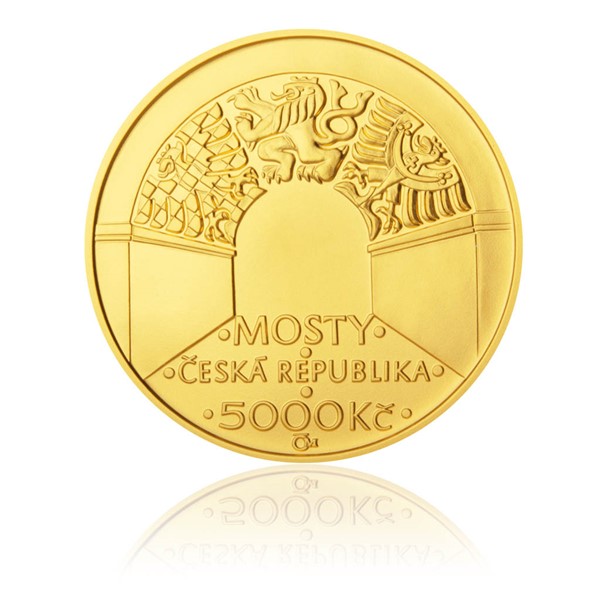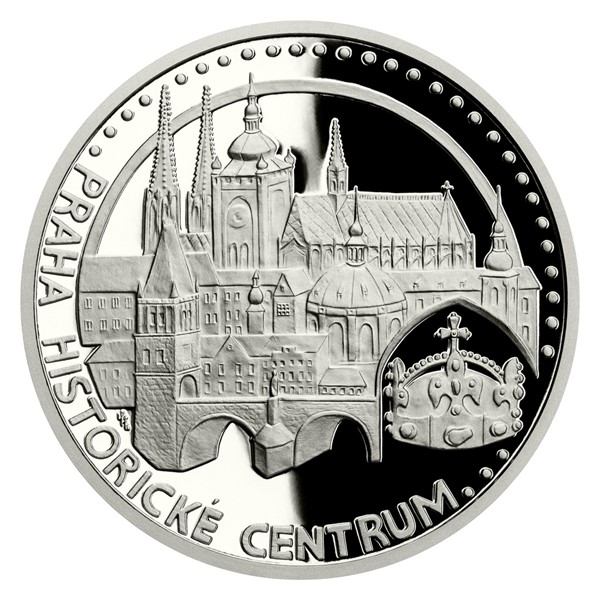Recommended Info For Quality Control Czechoslovakia Coins
How Is A Plaster Mold Made To Be Used As An Initial Physical Representation Of The Gold Medal Or Coin?There are several steps involved in the creation of a "maquette" which is a mold made of plaster, which is based on the style of a silver or gold coin. The first step is to use the design of the medal or coin as a starting point. The design could be developed either digitally or with graphics design software. It could be drawn by hand as a sketch. Other materials like clay or wax might be utilized.
Plaster preparation - Plaster is combined with water to make a workable consistency. It's essential to make a smooth mixture that is free of lumps.
The base is where the maquettes are sculpted. It is typically an unfinished wooden board or a flat and solid surface.
The artist begins by sculpting a maquette using the gold design. The plaster is shaped to create a relief or three-dimensional representation of the coin or medal.
Finer and more detailed- The artist concentrates on adding more details, enhancing the contours, while also ensuring accuracy of features and proportions within the design. This stage requires attention to detail and precision.
Giving the plaster time to dry out and setAfter a sculpture is done, it will require some time to set and set. This enables the maquette to harden and hold its shape.
Smoothing and finishing-After drying the surface of the maquette is smoothed and refined to remove any imperfections, bumps, or rough areas.
Preservation and Sealing - To keep maquettes, and to prepare them for future processes for scanning, or mold making, an adhesive or protective layer can be applied.
The final maquette of plaster represents the gold coin or medal design in a 3-D form. It is used in a number of stages in the manufacturing process, including scanning for digital reproduction or making molds to produce large-scale production. Artists can also use it to see and tweak the design. Have a look at the top rated Czechoslovakia gold coins plaster molds site advice. including ancient coin, twenty dollar coin, buy gold pieces, krugerrand coin, coins and gold, gold bullion bars for sale, krugerrand gold coin, krugerrand coin, bullion gold bars for sale, coin buy gold and more.

How Does An Janvier Machine Transfer The Design Of The Gold Coin Onto An Operational Hub?
A Janvier Machine, sometimes referred to as pantograph machines or a reducing device, is a machine employed in the process of coining to transfer designs from a Master Hub to a Working Hub. This is a brief overview of the Master Hub Creation.
The master hub, also known as the original die or mold it is the mold or die that contains the exact design and layout of the coin. It's produced with precision CNC cutting.
Janvier Machine Installation
The Janvier machine includes a stylus for tracing the design on the hub master and a cutter that reproduces the pattern.
The Janvier machine's master hub, that serves as a template to which the design can be copied, is positioned in a secure manner on the machine.
Tracing a Design
The Janvier machine features stylus that follows the contours, details and the design of the master wheel. As the stylus moves across the surface of master hub it keeps track of its shape.
Reduce the Design-
On the Janvier cutting tool, it copies the designs traced onto the hub of the machine which is normally made out of an abrasive material such as steel or nickel.
The cutting tools reduce or duplicate the design at a smaller scale, or a reduced size, compared to master hub. This reduction is vital in the process of minting, since it allows the striking of medals or coins at the size you want.
Precision and Accuracy
Janvier is a high-precision machine that ensures an accurate transfer of design from the master hub to the working hub. It precisely reproduces every detail and curves, including the smallest ones.
Quality Control
Inspections and quality checks are performed to verify that the design is in line with the specifications and accuracy required to strike the design.
Further Processing
The Janvier working hub functions as an instrument to facilitate the process of striking coins or medals. It is able to make multiple blanks of the medal or coin with the designs transferred.
The Janvier machine's purpose is essential for the minting process, enabling the reproduction and reduction of complex medal or coin designs from a master hub to working hubs precisely. These hubs are used to produce large quantities of medals and coins by with the strike method. Check out the recommended janvier processing Czechoslovakia gold medals website tips. including american gold eagle 1 oz, five dollar gold piece, twenty dollar gold coin, ebay gold coins, gold coin 24k price, 1979 gold dollar, price of 1 oz of gold, medal gold medal, liberty head nickel, gold & silver bullion and more.

How Do Gold Coins And Medals Receive Protective Coatings?
Gold medals or coins can undergo coating processes for various reasons, including protection, appearance enhancement or to create specific aesthetic effects. These are some of the coating methods that are employed.
Clear Protective Coating (Varies)Clear protective coating, like lacquer or a specialized polymer, may be applied to protect the surface from oxidation, tarnishing, or scratches. The coating will preserve the original look of the coin or medal and shields the base metal.
Improvement in appearance
Gold plating (or gold plating) A thin layer or gold may be applied on the surface of gold coins or medals. This gives the coin or medal the appearance of a luxurious, glossy appearance.
Aesthetic Aspekte
Patinas and antique finishes can be created by using chemical treatments or coatings. This process artificially ages the surface, giving it an aged or oxidized look that adds character and depth to the design.
Coloration or coloring- Specific areas of a medal may be colored with specialized enamels or coatings in order to emphasize the design elements, add contrast or create visual interest.
Anti-Tarnish Coatings-
Anti-Tarnish Solutions - For coins or medals with intricate designs or surfaces susceptible to tarnishing, anti-tarnish coats or solutions can be applied. The coatings protect the metal surface from oxidizing or discoloring with time.
Specialized Coatings or Authentication for Security-
UV-Reactive Coatings or Luminescent Coatings - Some coins and medals may have special coatings which react to UV sunlight. This can reveal hidden or encrypted elements for security or authentication reasons.
Selective Coatings that have Contrast
Selective Coating Removal: In certain instances, coatings are selectively removed from specific parts of the coin or medal to make a contrast between polished and coated surfaces, emphasizing the design elements.
Every coating serves a specific purpose. It could be used to shield the metal from damage or to enhance its appearance. It could also add security features. These coatings could have a major impact on the durability and visual appeal of gold coins and medals. They also enhance the value of these items. Read the best coating Prague Mint gold coins more tips. including michael phelps medal, 1 oz gold, saint gaudens gold coin, 1 oz gold coin, 5 cent piece, $5 gold piece, gold coin with angel on both sides, gold dollar, 1 oz gold coin, gold bullion gold and more.

How Do Gold-Plated Coins And Medals Get Their Vintage Or Antique Look?
This is how it's done. This is how and why it's done.
Chemical Patination. The medal or coin is treated using acid or solution that creates patina. These solutions can create an even tone or oxidation to give a look of age or antique. This technique can increase the clarity of a design and enhance the design.
Artificial AgingChemical or mechanical techniques are employed to artificially age the surface by mimicking the natural wear and tarnish that happens with time. The use of tools or abrasive treatments can cause wear or scratches to give the coin an aged look.
Toning or staining Staining or toning - Specialized solutions and treatments can be employed to tone or color the surface. This creates different hues of color. It can also be used to simulate the natural discoloration and toning of the skin that happens with time.
Buffing & Polishing Techniques - A certain area is picked to be polished or buffed in order to eliminate the surface layer or highlight, resulting in the appearance of aging or wear.
Why you should create an antique appearance
Aesthetic Appeal- Some collectors or even enthusiasts like the appearance of medals or coins that have an antique look for their aesthetic appeal. The appearance of aging gives depth and character to the design. It is visually striking.
Historic or Commemorative Significance Coins and Medals that commemorate historical periods or events may undergo aging processes to emulate coins from that period or to convey a genuine sense of history.
Increased CollectorshipCoins and medals that are antique are often sought-after by collectors looking for rare or limited-edition pieces. The antiqued appearance can boost their collectible and desirable value.
Highlighting Design ElementsBy establishing contrast between raised areas and those that are recessed, aging processes can make intricate details more visible and obvious.
Minting authorities who are artistic can employ aging techniques as a form artistic expression. They may give depth to the artwork, tell a story, or include symbolism.
Making an antique appearance for gold medals or coins is an intentional artistic decision that can evoke nostalgia and add visual interest or create a sense of history. The aesthetics have to be balanced with the coin’s value and authenticity. Take a look at the most popular antique finish of Prague Mint gold medals website advice. including 1 oz gold coin price today, gold and coin shops near me, 24k gold bullion, gold coins for sale, 1 oz gold coin price today, price of 1 oz of gold, gold price jm bullion, 1 ounce gold bullion, one ounce of gold, gold and coin near me and more.
